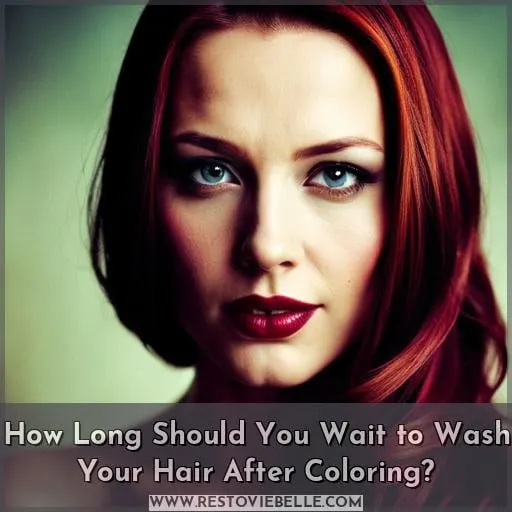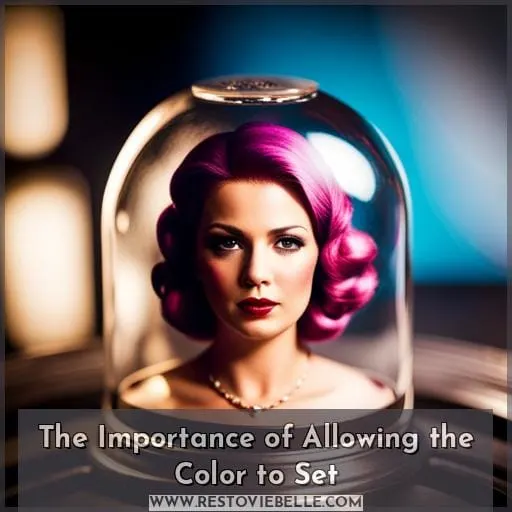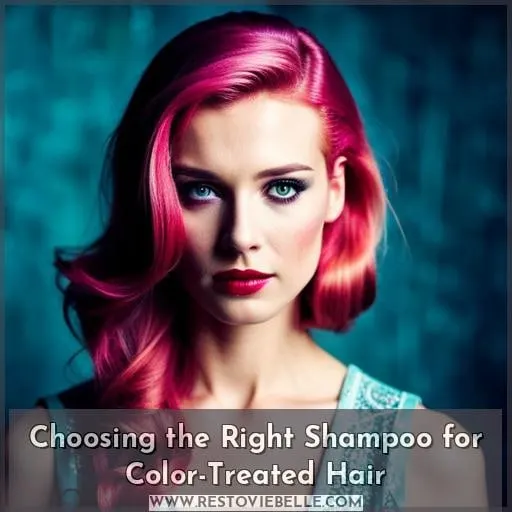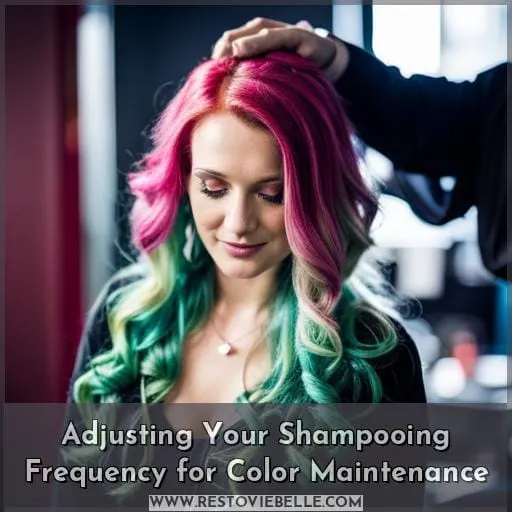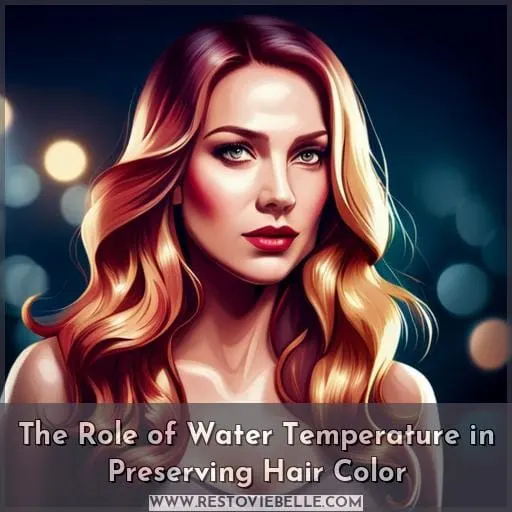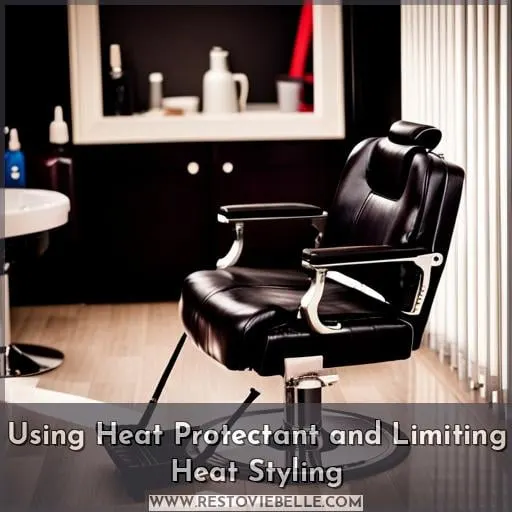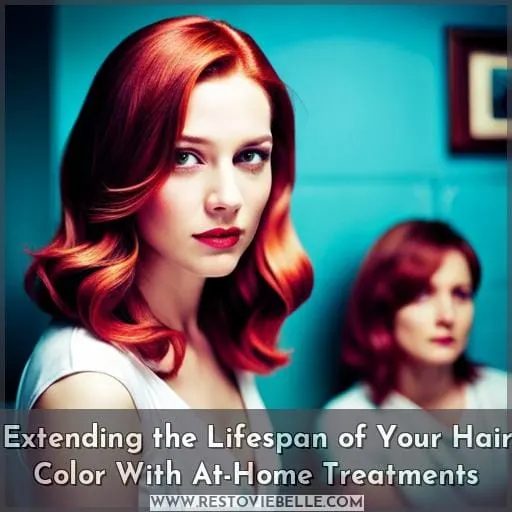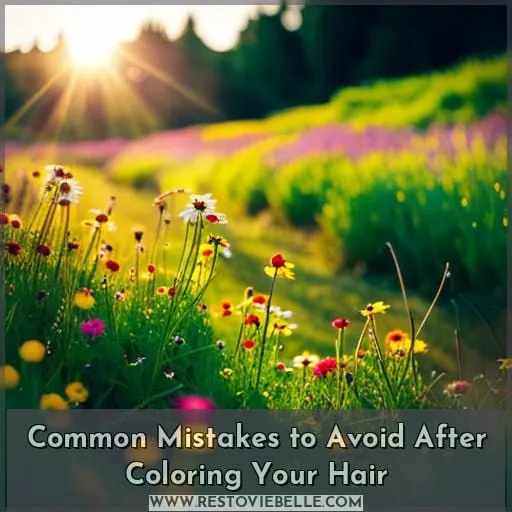This site is supported by our readers. We may earn a commission, at no cost to you, if you purchase through links.
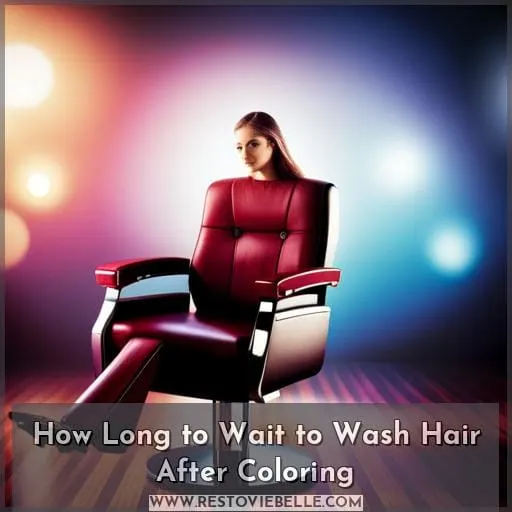 You’re not alone if you’ve been wondering how long to wait before washing your hair after coloring. It’s an important question, as the time period between color and wash can have a significant effect on the longevity of your new hue.
You’re not alone if you’ve been wondering how long to wait before washing your hair after coloring. It’s an important question, as the time period between color and wash can have a significant effect on the longevity of your new hue.
To ensure that your freshly dyed locks remain vibrant and healthy, it’s essential to understand what happens when you shampoo too soon – and why waiting is worth it in the end.
When exposed to water or high-sulfate shampoos shortly after getting colored, color molecules are stripped from hair strands resulting in dullness and dryness – yikes! That’s why professionals recommend allowing at least 48 hours for permanent dye (or 24 for semi-permanent) to set properly before attempting any sort of cleanup routine with sulfate-free or color safe products designed specifically for protecting treated tresses from fading out prematurely.
Table Of Contents
- Key Takeaways
- How Long Should You Wait to Wash Your Hair After Coloring?
- The Importance of Allowing the Color to Set
- Choosing the Right Shampoo for Color-Treated Hair
- Adjusting Your Shampooing Frequency for Color Maintenance
- The Role of Water Temperature in Preserving Hair Color
- Protecting Your Hair From Sun Exposure and UV Damage
- Using Heat Protectant and Limiting Heat Styling
- Extending the Lifespan of Your Hair Color With At-Home Treatments
- Common Mistakes to Avoid After Coloring Your Hair
- Conclusion
Key Takeaways
- Wait 48 hours before washing hair after coloring.
- Using high-sulfate shampoos early on can dull color and dry out hair.
- Allow hair color to set for three days if possible.
- Shampoo less frequently (2-3 times per week) for color maintenance.
How Long Should You Wait to Wash Your Hair After Coloring?
You should give your freshly colored locks a bit of time to settle in before lathering up, so for the best results, wait at least 48 hours between dyeing and washing. This allows the hair color molecules to set properly, preventing them from being stripped away by shampoo or fading prematurely.
To maintain vibrant colors over time, shampoo less frequently (two to three times per week) and use cooler water when rinsing out home hair dye until it runs clear. Additionally, using sulfate-free shampoos, as well as professional-grade treatments such as Olaplex or K18, can help preserve your shade for longer periods of time without damaging your strands.
Protecting dyed hair from UV rays is also important – make sure you apply a heat protectant prior to styling with hot tools and accessorize with hats whenever possible! Finally, be mindful that certain drugstore products may contain harsh chemicals that could strip away color faster than desired; always opt for high-quality shampoos specifically designed for color-treated tresses instead!
The Importance of Allowing the Color to Set
After dyeing your hair, allowing the color to set is like giving a freshly painted wall time to dry – essential for maintaining vibrant results. To achieve maximum longevity and prevent fading, there are several considerations when it comes to preserving your hue.
As far as timing goes, wait at least three days before washing newly dyed hair or 48 hours if you need to wash sooner than that.
When shampooing, use cooler water and limit frequency between two and three times per week with sulfate-free or color safe shampoos instead of clarifying ones, which can strip away pigment molecules from the strands.
Hair protection plays an important role too. Shield from damaging UV rays by using protectant products or hats during sunny days, while also avoiding chlorine pools and saltwater environments that could deteriorate hair health even more quickly.
Invest in high-quality pigmented shampoos/conditioners plus professional treatments such as Olaplex for extra protection against fading colors!
Choosing the Right Shampoo for Color-Treated Hair
When it comes to caring for color-treated hair, choosing the right shampoo is essential. Opting for sulfate-free and color-safe shampoos can help maintain your desired hue, while pigmented products provide an extra layer of protection against fading.
For long-lasting results, try a professional-grade treatment like Olaplex or K18 that will repair split ends and keep your color vibrant between salon visits.
Sulfate-free vs. color-safe
It’s important to choose a sulfate-free shampoo or color-safe product when caring for your freshly dyed hair. Sulfate-free products help maintain the natural oils in your scalp and reduce stripping of color molecules from the hair.
Color-safe shampoos can also preserve vibrancy and extend longevity between salon visits. Clarifying shampoos, on the other hand, may strip away some of your hard-earned hue.
Benefits of pigmented products
Pigmented shampoos and conditioners can help maintain your color vibrancy, as they deposit tiny amounts of dye into the hair shaft for up to 24 washes.
Benefits include:
- Hydration protection from harsh cleansers that strip away color molecules
- Maintaining hair vibrancy between salon visits with in-shower treatments for hair color
- Toning treatments to reduce brassiness of colored strands without damaging them
- Gentle cleansers that are formulated specifically for protecting colored locks during a wash cycle.
By using pigmented products, you can keep your hue vibrant while taking care not to over shampoo or use too hot water, which could cause premature fading.
Professional-grade color treatments
For long-lasting color and ultimate protection, consider investing in professional-grade treatments like Olaplex or K18. Vegan hair treatments such as these are developed to equalize porosity, provide UV protection, reduce frizz, and protect the integrity of colored hair.
These products can help extend color longevity by sealing in the cuticle while providing hydration that helps prevent damage from swimming or exposure to hot water after coloring.
Adjusting Your Shampooing Frequency for Color Maintenance
To keep your color vibrant, reduce shampooing frequency to about two or three times a week. Color-treated hair needs more care than natural hair for optimal maintenance and longer-lasting results. Washing too frequently can strip away the dye molecules from the strands, resulting in duller tones and faster fading of pigment.
If you need to wash more often due to an oily scalp or product buildup, switch out your regular shampoos with sulfate-free or color-safe alternatives that won’t damage your locks as much as harsher formulas do.
When rinsing newly dyed tresses, use cold water until it runs clear—never hot! Hot water opens up the cuticle layer, allowing pigments easier access out of each strand, whereas cooler temperatures seal them in tight and help prevent leaching over time.
For extra protection against sun exposure, invest in UV protectant products like hats and umbrellas, which will also help preserve vibrancy while keeping delicate strands moisturized throughout the summer months, making sure they look their best regardless of the season!
Finally, if you want an additional boost, try tinted shampoos and conditioners to maintain tonality between salon visits without having to worry too much about washing frequency.
The Role of Water Temperature in Preserving Hair Color
Preserving the vibrancy of your freshly dyed locks requires more than just adjusting the frequency of shampooing. Water temperature plays an essential role in keeping color intact. When rinsing out home hair dye, opt for cool or cold water, as hot temperatures can cause fading faster.
Washing with cooler water will keep the cuticle closed and protect against damage from heat styling tools. Apply a heat protectant while wet to prevent dryness, frizz, and split ends. Hair type also affects how often you should wash your hair.
Fashion colors require less frequent washing and cold water, whereas highlights or lowlights are more forgiving with temperature variations.
Invest in high-quality shampoos that help hydrate treated strands. Professional-grade treatments like Olaplex or K18 can seal in color if possible – they’re worth it! Sun protection is another key factor in preserving color molecules.
With these tips in mind, you’ll be able to extend the longevity of your newly colored tresses, no matter what their type may be.
Protecting Your Hair From Sun Exposure and UV Damage
It’s important to protect your hair from sun exposure and UV damage, especially during the summer months. Sunscreen protection is essential for preserving your hair color, as UV rays can cause fading and discoloration over time.
To prevent this from happening, use a heat protectant before styling with hot tools or venturing outdoors in sunny weather. These products offer an extra layer of defense against environmental factors that can lead to dryness and dulling of the shade you love most.
Hats are also great options for shielding strands when outside; look for styles that cover both head and neck areas if possible.
When swimming in chlorinated pools or saltwater ocean water, wear a swim cap if available.
Regular maintenance is necessary throughout the warmer seasons. Choose high-quality shampoo formulations specially designed with pigments tailored towards maintaining vibrancy even after multiple washes.
But always remember not to shampoo too often (max 2-3 times per week) as it could still remove some dye particles slowly over time due to its sulfate content.
Using Heat Protectant and Limiting Heat Styling
Protect your color-treated locks by using a heat protectant before styling with hot tools to form a barrier between your hair and the heat. This will shield colored hair from direct exposure to high temperatures, which is essential for long-lasting vibrancy and strength.
It also helps prevent frizz, dryness, split ends, or other damage caused by excessive heating.
Invest in good quality thermal protection sprays specifically designed for colored hair, as they work best at protecting it from unwanted damage. Even if you only use heated tools occasionally, regularly applying such products can help maintain healthy locks over time without compromising color retention.
When applying the product evenly throughout damp strands prior to styling with curling irons or straighteners, it not only prevents unnecessary breakage but also keeps frizz under control. This is because it closes up each separate strand’s cuticle layers, locking moisture inside and providing hydration all day long.
As an added bonus, these types of products usually come infused with antioxidants, which help combat free radicals created due to UV rays during the summer months, further extending longevity.
So, make sure you always have one on hand when reaching out for any kind of heated tool, no matter how minimal usage may be.
Extending the Lifespan of Your Hair Color With At-Home Treatments
You can keep your vibrant hair color intact for longer with at-home treatments, like the luxurious SOL DE JANEIRO Hair Mask Repair or Pravana Nevo Leave-In Treatment – a miracle worker that will almost magically protect and repair split ends!
To extend the lifespan of your hair color:
- Use an intensive DIY hair mask to add strength, hydration, and shine while repairing damage.
- For high-quality results, use sulfate-free shampoos or, better yet, professional-grade treatments such as Olaplex or K18, which help seal in color and reduce fading.
- Try using pigmented shampoos to maintain tonality between salon visits. These products help prevent brassiness from appearing over time due to natural oxidation processes occurring within our bodies.
- Invest in heat protection products that create a shield between your locks and any styling tools used on them (hot curlers, etc.
Common Mistakes to Avoid After Coloring Your Hair
To ensure vibrant and healthy hair color, it’s important to avoid common mistakes post-dyeing. Hot showers can damage the cuticle of the hair, causing dye to fade quickly. Towel drying too harshly or using a brush on wet strands can also cause breakage and split ends that lead to color loss.
Avoiding chlorine is another key factor in retaining your colored locks as swimming in chlorinated water strips away pigment from dyed strands. Too much shampoo or frequent washing with harsh cleansers may strip off natural oils needed for hydration, which leads to dryness and fading dye molecules over time.
Heat styling without protection will take its toll on both the integrity of each strand as well as its hue; always use heat protectants prior to styling tools for best results! Hair maintenance is essential: wash two to three times per week with sulfate-free products designed specifically for colored hair; apply treatments like Olaplex or K18 between salon visits; choose shampoos formulated with pigments tailored towards preserving tonality; switch up temperatures from cool/cold rinses instead of hot ones.
These are just some steps you should consider if you’re looking into keeping your new shade fresh longer—and provide an overall boost in healthiness while at it.
Conclusion
Recoloring your hair can give you a refreshed look, but it’s essential to know how to care for your newly dyed locks. Waiting three days before washing will allow the color to set. It is best to limit shampooing to two to three times a week.
Using cooler water to rinse, protecting hair from the sun, and using heat protectant before styling can all help preserve hair color.
To maintain color vibrancy, opt for sulfate-free or color-safe shampoos. Additionally, pigmented shampoos and conditioners can help. Professional-grade color-preserving treatments like Olaplex or K18 can also extend the life of your color.
By following these steps, you can get the most out of your hair color and maintain its vibrancy for longer.
